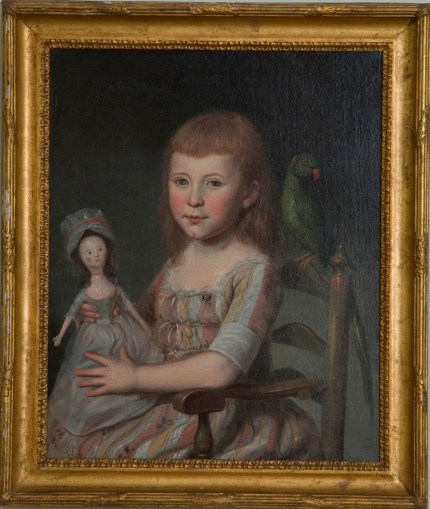Matthias Hammond’s House and Anne Proctor’s Doll
With all these stories about Founders’ children and dolls, I thought I should show an actual doll from the period.
The Hammond-Harwood House Museum stands in Annapolis, Maryland. The architect William Buckland designed it just before he died in 1774, and his assistant John Randall completed the building for a young tobacco planter named Matthias Hammond (1750–1786).
Hammond had just been elected to the Maryland General Assembly by Annapolis’s anti-taxation party. He was also a new member of the vestry of St. Anne’s Parish. With those responsibilities, he presumably wanted a house in town.
However, Hammond doesn’t appear to have ever lived in his Annapolis house for an extended period. Instead he stayed on his slave-labor plantation in what is now Gambril. He also never married, and thus never raised children in the house.
In 1926 St. John’s College bought the building to use as a museum, but ran into financial straits during the Depression. The Hammond-Harwood House Association formed in 1938 to maintain the site as an independent museum of architecture and the decorative arts.
Among the artifacts in the museum’s collection is this doll from a Baltimore family.
She is a Queen Anne style doll and dates to about 1785. She may have been made in England, starting as a block of wood and slowly taking shape as a carver turned the block on a lathe. It is easy to see why six-year-old Ann Proctor would have been attached to her, perhaps so attached that she insisted her doll be included in this portrait of her:That’s a Charles Willson Peale painting from 1789. The museum notes that the doll is actually smaller than Peale painted it, so as not to distract from Anne (and her parrot). But clearly the doll had a lot of meaning for the Proctors.



No comments:
Post a Comment